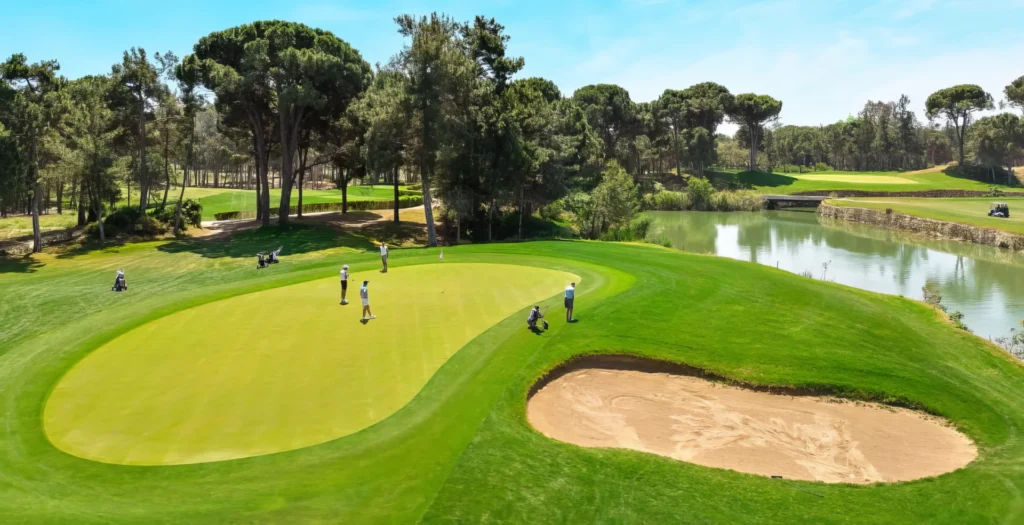Introduction: From Shepherds to Superstars
Modern golf is a billion-dollar industry played worldwide by professionals in crowded arenas, streamed online, and played virtually in esports venues. This technologically advanced game boasts a surprisingly humble origins story. Golf’s beginning is a tale of its development, how a Scottish herder’s pastime became one of the world’s top sports. Join us as we take a journey through the centuries to see just how much golf has evolved.
The History of Golf: Scotland’s Game
The majority of historians place the sport’s origins in 15th-century Scotland, when shepherds allegedly struck stones down rabbit holes with clubs. Golf had become popular enough by 1457 that King James II banned it, worrying that it distracted soldiers from archery lessons. Bans only served to make the sport more attractive. In the 1500s, royal Scots played it as well, turning a pastime into a cultural institution.
The Initial Rules and Gear
The first written Rules of Golf were drawn up in 1744 by the Gentlemen Golfers of Leith. Courses were natural terrain, but equipment started developing. Initial golf balls were feather-filled, hand-sewn leather filled with feathers, then they were succeeded by the gutty ball around the mid-1800s.
Which was less expensive but much more durable. Clubs also became more sophisticated as they progressed from rough wooden sticks to beautifully constructed irons and drivers, offering more power and accuracy for golfers.
The Industrial Revolution: Golf Expands Globally
The 19th-century Industrial Revolution forever altered golf. Railways helped transport people to new courses, manufacturing innovations put clubs and balls more in reach, and the game began its spread beyond Scotland to England, Europe, and on to the United States. Golf clubs had been formed in the first instances outside Britain by the late 1800s, where the sport started acquiring a following on a global scale.
The 20th Century: Professionalization and Stardom
The early 1900s brought organized tournaments, including the British Open (1860), U.S. Open (1895), and Masters (1934), cementing golf’s reputation as a professional sport.
- Television Era (1950s to 70s): Arnold Palmer, Jack Nicklaus, and Gary Player turned golf into a mainstream spectacle, broadcast into millions of homes.
- . Global Icons (1980s to 2000s): Tiger Woods came on the scene, transforming the sport with athleticism, diversity, and global popularity.
By the end of the 20th century, golf wasn’t just a sport anymore, it became a lifestyle.
Modern Golf: Data, Diversity, and Digital Play
The 21st century saw a revolution in playing, viewing, and experimenting with the game of golf.
- Technology: Swing analyzers, GPS rangefinders, and launch monitors now direct every aspect of the game. Clubs employ advanced composites with advanced materials science, and balls are designed with spin, distance, and control in mind.
- Inclusivity: No longer an elite sport, golf has grown. Ladies’ tours, collegiate programs, as well as junior leagues now offer avenues for diverse talent globally.
- College Golf Programs: US as well as European universities are churning out future stars by merging academia with professional-level training.
- Sports and Simulators: Virtual training, simulators, and indoor golf enable competitors to compete on other continents, sometimes without ever walking on grass.
Golf Today: A Game That’s International with Ancient Roots
From St. Andrews in Scotland to Tokyo’s futuristic golf domes, the sport has been both old and new. Whilst modern-day players use laser rangefinders and interpret figures on live TV in real-time, something integral to the sport, patience, precision, and planning, stays firm.
Golf’s history demonstrates the blending of tradition and innovation. From balls stuffed with feathers to computerized simulators that use artificial intelligence, golf has spanned centuries without losing its essence.
Conclusion
The Swing Through Time. The history of golf is more than just clubs, courses, or competitions, and it’s a story of adaptation. Centuries redrew the game every hundred years, yet its popularity endures. You could be a golfer on the weekends, a collegiate golfer seeking a scholarship, or a spectator watching the next Tiger Woods develop; you’re a part of a centuries-long tradition. Golf is more than a game. It’s history on the move.



